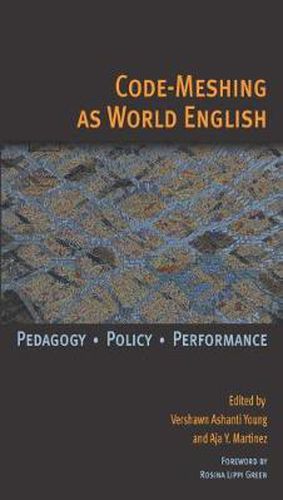Readings Newsletter
Become a Readings Member to make your shopping experience even easier.
Sign in or sign up for free!
You’re not far away from qualifying for FREE standard shipping within Australia
You’ve qualified for FREE standard shipping within Australia
The cart is loading…






Although linguists have traditionally viewed code-switching as the simultaneous use of two language varieties in a single context, scholars and teachers of English have appropriated the term to argue for teaching minority students to monitor their languages and dialects according to context. For advocates of code-switching, teaching students to distinguish between home language and school language offers a solution to the tug-of-war between standard and nonstandard Englishes.
This volume arises from concerns that this kind of code-switching may actually facilitate the illiteracy and academic failure that educators seek to eliminate and can promote resistance to Standard English rather than encouraging its use. The original essays in this collection offer various perspectives on why code-meshing - blending minoritized dialects and world Englishes with Standard English - is a better pedagogical alternative than code-switching in the teaching of reading, writing, listening, speaking, and visually representing to diverse learners.
This collection argues that code-meshing rather than code-switching leads to lucid, often dynamic prose by people whose first language is something other than English, as well as by native English speakers who speak and write with accents and those whose home language or neighbourhood dialects are deemed non-standard. While acknowledging the difficulties in implementing a code-meshing pedagogy, editors Vershawn Ashanti Young and Aja Y. Martinez, along with a range of scholars from international and national literacy studies, English education, writing studies, sociolinguistics, and critical pedagogy, argue that all writers and speakers benefit when we demystify academic language and encourage students to explore the plurality of the English language in both unofficial and official spaces.
$9.00 standard shipping within Australia
FREE standard shipping within Australia for orders over $100.00
Express & International shipping calculated at checkout
Although linguists have traditionally viewed code-switching as the simultaneous use of two language varieties in a single context, scholars and teachers of English have appropriated the term to argue for teaching minority students to monitor their languages and dialects according to context. For advocates of code-switching, teaching students to distinguish between home language and school language offers a solution to the tug-of-war between standard and nonstandard Englishes.
This volume arises from concerns that this kind of code-switching may actually facilitate the illiteracy and academic failure that educators seek to eliminate and can promote resistance to Standard English rather than encouraging its use. The original essays in this collection offer various perspectives on why code-meshing - blending minoritized dialects and world Englishes with Standard English - is a better pedagogical alternative than code-switching in the teaching of reading, writing, listening, speaking, and visually representing to diverse learners.
This collection argues that code-meshing rather than code-switching leads to lucid, often dynamic prose by people whose first language is something other than English, as well as by native English speakers who speak and write with accents and those whose home language or neighbourhood dialects are deemed non-standard. While acknowledging the difficulties in implementing a code-meshing pedagogy, editors Vershawn Ashanti Young and Aja Y. Martinez, along with a range of scholars from international and national literacy studies, English education, writing studies, sociolinguistics, and critical pedagogy, argue that all writers and speakers benefit when we demystify academic language and encourage students to explore the plurality of the English language in both unofficial and official spaces.